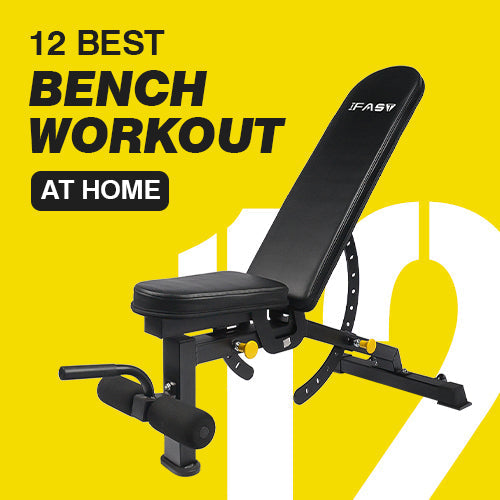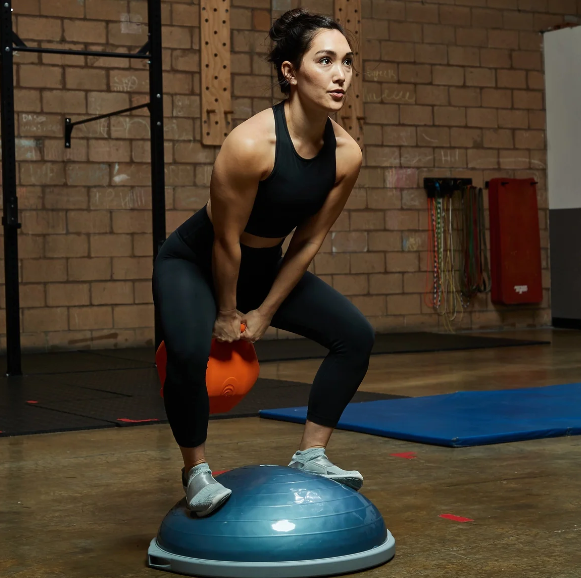The dumbbell fly movement has a very significant training effect on the thickness and line of the pectoralis major and is one of the favorite movements of the majority of bodybuilding enthusiasts to exercise the pectoral muscles. The plank and incline dumbbell fly are the best exercises for developing the outer pecs.
The width and thickness of the lateral pecs are very important for the entire pectoral muscle. For best results, keep the dumbbells as low as possible to fully stretch the muscles. At the top, do not keep the dumbbells together, because the dumbbells at the top do not provide effective resistance to the pectoral muscles. For the best results and safety, it is recommended that you complete the dumbbell fly with slow force.
Dumbbell Fly Muscles Worked
The main muscles of the dumbbell fly training are the pectoralis major and the anterior deltoid, and the other auxiliary muscles involved are the serratus anterior, biceps, triceps, brachioradialis and latissimus dorsi. The most important exercise is the pectoralis major, and the rest of the muscles are less powerful.

According to the difference in body position, dumbbell fly can be divided into a bent overfly, incline fly, decline fly and dumbbell fly. Let's take a look at how to practice these movements.
Benefits Of Dumbbell Fly
1. Increase chest muscle hypertrophy/girth
Isolation exercises are a great way to further build muscle activity and specific muscles that don't get the extra load of a compound multi-joint bench press program. Incorporating dumbbell flyes into your program is a great way to increase muscle work and help you build chest mass and strength potential.
2. Increase the dimension of chest muscle training
The dumbbell fly is a valuable exercise that adds another dimension to chest training, often helping to maximize overall pec size, detail, and growth. The multi-angle dumbbell fly can also help further stimulate new muscle fibers and hypertrophy.
3. Isolated stimulation of the pectoral muscles
While we often talk about obtaining optimal strength and athletic performance for multi-joint compound movements, the dumbbell fly is valuable if you're trying to specifically target the pecs with dumbbell exercises for further development or injury prevention.
Using the dumbbell fly (and other variations/alternatives to the fly) can help with both of the above, while also minimizing (often encountered in some compound presses) targeting of the triceps, elbows Excessive wear, and tear on the shoulders, wrists, and shoulders.
5 Best dumbbell fly workout
Dumbbell Bent-Over Fly
The dumbbell bent overfly is a classic exercise for the rear deltoid.

Step 1: Preparations Step 1: The feet are naturally separated and shoulder-width apart, the upper body is leaned forward about 60°, the knees are slightly bent, and the dumbbells are held in both hands, hanging in front of the knees.
Step 2: Action process Keep your back straight, tighten your abdomen, keep your arms slightly bent and lift the dumbbells upwards, keeping your upper arms and back level, and stay for 1-2 seconds.
Step 3: Restoration Action Control the dumbbells with both arms and slowly return to the preparation action, and do 3-6 sets of 4-8 times each.
Dumbbell Incline Fly
The dumbbell incline fly mainly works the upper chest and deltoid muscles.

Step 1: Preparing for action Adjust the dumbbell stool to an incline of 30-60° and lean back on the dumbbell chair. Holding a dumbbell in hand, lift up diagonally so that your arms are perpendicular to the plank.
Step 2: Action process Tighten the waist, abdomen and back muscles, control the dumbbells with both arms and slowly descend in an arc until the wrists are on the same plane as the body, and the arms are bent at 90° to avoid elbow strain. Feel the full stretch in the muscles on both sides of the chest.
Step 3: Restoration Action Slowly fold your arms to restore the action and place the dumbbells in front of your chest.
Dumbbell Decline Fly
The Decline dumbbell fly stimulates the underside of the pectoral muscles through a change in position.

Step 1: Preparatory action: The dumbbell chair is tilted down 15-30°, lie on your back on the chair, hold the dumbbells in both hands and lift up, with the elbows slightly bent.
Step 2: During the action, bend your elbows slightly and place them on the backplane, pause for 2 seconds. Raise it to your chest in a certain arc. Keep your arms and shoulders in the same plane throughout
Dumbbell Fly
The supine dumbbell fly has a very effective exercise effect on the thickness and line of the pectoralis major.

Step 1: Preparation Lie on your back on a dumbbell bench, hold the dumbbell in your hand, and press the dumbbell upwards, keeping your elbows slightly bent.
Step 2: Action process Keep the elbows slightly bent at a fixed angle, lower to the backplane, and lower the upper arms to below the level of the shoulders. Pause for 1-2 seconds. When you lift up, it is like holding a big tree, pressing along a certain arc, and feeling the stretch and contraction of the pectoral muscles. Note: The angle between the upper arm and the forearm must be maintained at 100 to 120 degrees and the dumbbell should be on the plane line of the shoulder and elbow joints, no matter when lifting or falling.
Dumbbell Floor Fly

If you're doing a fly on a bench press, you won't be able to control the descent when the weight is too heavy, or you're exhausted. When the angle control is not good, you will easily strain your shoulders, so this makes it difficult for you to use heavy weights for fly clips. Do a supine fly on the floor. The magnitude of the drop can be effectively controlled. And when you are exhausted, you can push the weight on the ground, which can help you be safer and complete the action of the fly clip chest.


